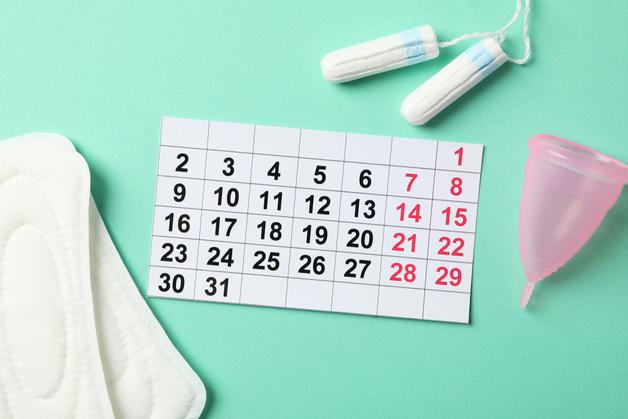Anticipation hums in the quiet moments. For many parents-to-be, pregnancy is an exhilarating, sometimes bewildering journey—one punctuated by lively kicks, shifting priorities, and the steady emergence of new physical, emotional, and logistical realities. Perhaps you’ve found yourself wide awake at 3 a.m., pondering due dates, fetal milestones, or the relentless stream of appointments. Questions stack up, worries nestle in the background, while hope and excitement surge. Amid this whirlwind, a pregnancy calendar often becomes an invaluable ally. Not simply a collection of dates, but a dynamic companion: organizing your medical care, guiding your self-care, and illuminating each remarkable moment of gestational progress. What exactly unfolds week after week in your pregnancy? How can you translate medical jargon—ultrasound, fundal height, folic acid—into actionable choices? And, as fatigue or uncertainty grows, is there a reliable way to capture fleeting symptoms or plan for maternity leave without losing sight of joy? Let’s chart a path through the ebb and flow together, exploring practical, evidence-based strategies that put you, your baby, and your journey at the center.
Why Opt for a Pregnancy Calendar?
A pregnancy calendar is more than date keeping. For some, it becomes a lifeline, transforming overwhelming checklists into bite-sized, manageable tasks. Imagine having a clear schematic—milestones, scans, lifestyle adaptations—all mapped out in sync with your baby’s astonishing growth. Week by week, the calendar becomes a personalized matrix: record doctor’s appointments, gestational age, evolving symptoms, and moments of awe. Instead of fragmented scraps of information, you gain an integrated timeline—where even subtle details, like a sudden spike in heartburn or the baby’s first detectable movement, find their place.
Medical experts regularly point out that antenatal care—timely screenings, ultrasounds, and glucose tolerance tests—relies heavily on accurate scheduling. Here, your pregnancy calendar rescues you from the fog: set reminders for key events, such as the anatomy scan around 20 weeks, OGTT, or Group B Streptococcus screening. Early planning also supports emotional resilience. When daily life collides with unpredictability—nausea, unexpected work obligations, family demands—the calendar offers flexible structure, nudging you onward without rigidity.
Parents with previous pregnancies, IVF journeys, or twin gestations often encounter divergent pathways; a tailored pregnancy calendar adapts smoothly, taking unique health needs—like extra ultrasounds or nutritional adjustments—into account. This is about clarity, not conformity. Proactive organization, not pressure.
What about emotional wellbeing? Documenting small victories, jottings of gratitude, or even daily frustrations, transforms your calendar into an interactive diary—sometimes practical, sometimes cathartic, always yours.
Understanding Pregnancy Duration, Trimesters, and Due Dates
Numbers matter, but context is everything. Standard obstetrics defines a full-term pregnancy as lasting 39 to 40 weeks and 6 days, calculated from the first day of the last menstrual period (LMP)—not from conception. Yet almost no baby arrives on the predicted day; clinical studies estimate fewer than 5% do. Why? Cycles differ. Ultrasounds may revise anticipated dates. If you’re navigating irregular menstruation or IVF, your calendar will help bridge ambiguity and foster real-time adaptation.
Pregnancy unfolds across three distinct trimesters:
- First trimester (weeks 1–12): Cellular transformation accelerates; critical organs form rapidly. Hormonal fluctuations? Unavoidable. Nausea, breast changes, mood swings—the body’s recalibration is as inevitable as it is bewildering.
- Second trimester (weeks 13–28): Energy often rebounds. Fetal movement—the famous “quickening”—finally arrives. Anatomic details, once invisible, leap into focus at the mid-pregnancy scan.
- Third trimester (weeks 29–40+): Final preparations take center stage. The uterus swells, back discomfort flares, and anticipation peaks. Contractions—Braxton Hicks or true labor?—may trigger new questions, many best recorded promptly in your calendar for later review with your healthcare provider.
Embrace uncertainty. Variability, whether from cycle irregularity or evolving medical opinions, is the only constant. Each calendar action—jotting down prenatal appointment times, noting changing fetal movement patterns—anchors you in the present while preparing you for the unexpected.
How to Harness Your Pregnancy Calendar
Building a Robust Foundation
Everything starts with gestational age. That often means counting from the first day of your last period, then projecting a due date by adding 40 weeks (or 280 days). Yet, this arithmetic is just a springboard. Your pregnancy calendar grows with you: color-coded reminders for prenatal vitamins, a of family medical history to share with your OB-GYN, or a starred note for questions to raise at the next scan. Parents expecting multiples (twins, triplets) annotate extra ultrasound appointments; those with prior losses can integrate additional check-ins or psychological support.
Flexibility, Individualization, and Emotional Tracking
Rigid structure rarely survives contact with reality. A well-designed pregnancy calendar bends, allowing spontaneous changes—be it unexpected bleeding (always prompt a provider call), fluctuating nausea, or rescheduling for a much-needed break. Digital apps or classic paper planners both excel, as long as they accommodate cross-outs, new notes, and mood tracking. Highlight emerging worries, celebrate decreasing symptoms (finally sleeping better!), or simply record the number of kicks felt during a long meeting.
Week-by-Week Tracking: Unveiling the Process
Knowledge fosters empowerment. The first day of your last period sparks the official count: weeks tick by, each bringing a distinct physiological and emotional tableau. What to expect? Early on: hCG (human chorionic gonadotropin) surges, cravings, fatigue. By week 20: uterine fundal height, perhaps the first sight of tiny toes during the mid-pregnancy ultrasound. In late pregnancy: monitoring fetal movement counts becomes paramount—an extremely effective marker of fetal wellbeing according to perinatal research.
Pregnancy Calendar Breakdown: Milestones and Meanings
First Trimester: Conception to Week 12
This phase rarely feels predictable. Hormones in overdrive, delicate embryonic structures taking shape, and a sudden, sometimes overwhelming exhaustion. The calendar should hold space for key medical touchpoints:
- Weeks 1–4: Implantation, subtle shifts, sometimes indistinct symptoms. Essential to record when symptoms start, since precise documentation supports early identification of potential complications, such as ectopic pregnancy or threatened miscarriage.
- Weeks 5–8: The initial ultrasound, confirming intrauterine pregnancy and viability. Beta-hCG blood work, blood type screening, and infection panel—these belong on your checklist.
- Weeks 9–12: First trimester combined screening: nuchal translucency ultrasound, biochemical markers for conditions like trisomy 21. Early dietary adjustments—folic acid, increased protein, iron supplementation as advised—become part of your evolving calendar narrative.
Second Trimester: Weeks 13–28
Nausea often fades. Appetite and curiosity rebound. Carefully charting growth—abdominal circumference, maternal weight, fetal heart rate—transforms the calendar into a mini medical record.
- Weeks 13–16: Stillness. Fetal growth stabilizes; subtle symptoms subside. Expect blood tests for neural tube defects and continued physical changes—sometimes even visible bump development.
- Weeks 17–20: Quickening—the first flutters. Schedule the essential anomaly scan and use your pregnancy calendar to organize anatomy checks and address emerging worries with your healthcare provider.
- Weeks 21–24: Focus on gestational diabetes screening. Signs of preeclampsia such as swelling, headaches, or elevated blood pressure warrant immediate attention and should be documented for reference.
- Weeks 25–28: Preparation accelerates: prenatal classes, hospital pre-registration, creating a birth plan and nursery setup. Mark this phase with enthusiasm, as the calendar’s reminders can help prevent last-minute panic.
Third Trimester: Week 29 through Delivery
Intensity increases. Many find fatigue mounting along with excitement (and a fair degree of anxiety).
- Weeks 29–32: Officially the period for antenatal education—breathing exercises, perineal massage, partner involvement. Document episodes of irregular contractions (Braxton Hicks versus labor), and keep a daily hydration log.
- Weeks 33–36: Review birth preferences. Ensure car seat installation—safety first. Prepare for the Group B Streptococcus swab and note the timeline for potential induction discussions if complications arise.
- Weeks 37–40+: Count fetal movements. List last-minute essentials—hospital bag, phone charger, snacks. Mark reminders to review delivery mode options (vaginal, cesarean), especially if medical discussions shift rapidly near the due date.
Organizing Prenatal Appointments and Logistics
Frequency increases as delivery nears: from monthly to biweekly to weekly after 36 weeks. Regular ultrasounds, diabetes tests, and cervical checks—all belong neatly scheduled in the pregnancy calendar. For high-risk pregnancies—hypertension, gestational diabetes—a personalized tracking system supports adherence and reduces mental burden. Remember to record personal milestones, too: baby showers, maternity leave plans, and cherished moments of reflection.
Nutrition, Wellness, and Lifestyle as Structured by Your Calendar
Optimal nutrition serves as the bedrock of fetomaternal health. Folic acid remains indispensable (400–800 micrograms daily) during early neural development; iron guards against anemia. Calcium, vitamin D, and omega-3 fatty acids (notably DHA, critical for brain growth) gain prominence as pregnancy progresses. The calendar is where meal timing and nutrient intake can be planned deliberately, especially to offset symptoms like morning sickness or heartburn. Hydration—8–10 cups of water daily—is not an arbitrary number: it underpins amniotic fluid balance and prevents complications like constipation.
Physical activity is generally encouraged in uncomplicated pregnancies. Walking, prenatal yoga, and swimming are all scientifically supported for both musculoskeletal and emotional benefits; always consult your provider, and log permitted activities (versus those advised against).
Sleep hygiene deserves its own recurring calendar note: restorative rest (usually 7–9 hours for most adults) underpins mood stabilization and helps moderate gestational weight gain. Where anxiety spikes, techniques ranging from deep breathing to cognitive behavioral strategies offer evidence-based relief—record their efficacy for future reference.
Navigating Common Pregnancy Changes: Recognition and Adaptation
Expect the unexpected—swelling, mood swings, or round ligament pain—and lean on your pregnancy calendar to spot patterns. Chronicling daily symptoms sharpens self-awareness (and ensures providers get accurate accounts). For example, documenting swelling, leg pain, or headaches can signal conditions like pre-eclampsia. Persistent heartburn? Note meal contents, timing, and response to dietary changes. Escalating fatigue? Schedule naps or enlist extra help.
Should serious symptoms arise—red vaginal bleeding, severe abdominal pain, vision changes—a prompt call to your provider is non-negotiable. Accurate, timestamped notes from your calendar offer practitioners valuable diagnostic clues, improving care cooperation and outcome.
Organizational Support and Digital Innovations
Today’s parents often turn to technology for backup. Digital pregnancy tracker apps combine educational push notifications, appointment reminders, and symptom logs. Opt for platforms with robust privacy, customizable checklists, and science-backed information. Remember: your pregnancy calendar should feel like a tailored tool, not a cage. Those with complex histories (multiple babies, underlying medical conditions) benefit from flexible adjustments—a living roadmap, never a static rulebook. Engage family: assign roles for postpartum support, complete hospital preparations, and share calendar milestones to foster collaboration.
Checklists—hospital bag, nursery readiness, safety checks—are indispensable. They transform anxiety about memory lapses into confidence. A transparent, up-to-date calendar gives everyone a compass when real life becomes unpredictable.
Key Takeaways
- A pregnancy calendar is your organizing dashboard, tracking fetal development, health appointments, and personal milestones week by week.
- Individualization is key: adjust your calendar for unique pregnancy needs—be it multiples, IVF, or additional health monitoring.
- Use your tool to document symptoms, track nutritional intake, and prepare for screenings—this empowers informed conversations with healthcare professionals.
- Digital options offer streamlined reminders and documentation, but paper planners remain equally effective if they foster regular engagement.
- Prioritize evidence-based nutrition (folic acid, iron, DHA, hydration) and safe physical activity (with medical approval) to maximize wellbeing.
- Symptoms—typical or not—should be clearly documented and discussed with your provider whenever uncertainty or severity arises.
- Opt for support: workshops, online forums, or professional consultations. Remember, resources abound for parents navigating pregnancy’s unpredictability.
- For tailored content, comprehensive milestone tracking, and free pediatric health questionnaires, consider downloading the Heloa app to personalize your journey and access trustworthy, up-to-date guidance at every stage.
Parenthood begins long before your baby’s birth—let a pregnancy calendar illuminate, simplify, and elevate each step along the way.
Questions Parents Ask
What is a pregnancy calendar and why do parents use one?
A pregnancy calendar serves as a supportive companion, mapping out the stages of pregnancy week by week or month by month. It breaks the journey down into clear steps, helping parents track their baby’s growth, upcoming medical appointments, and significant milestones—like the first time movements are felt or key ultrasound dates. Many parents appreciate how it simplifies the process and offers gentle reminders, making it easier to stay informed and organized. You can find both paper and digital versions, allowing you to choose whatever suits your lifestyle best.
Are there different types of pregnancy calendars or calculators available?
Absolutely, several types of pregnancy calendars and calculators exist, each tailored to make following your pregnancy easier. Some tools simply count the weeks and trimesters, while others include interactive features—like daily wellbeing tips, week-specific symptom trackers, or reminders for check-ups. Ovulation calculators can also help some parents pinpoint conception or estimate a due date. Choosing the right calendar depends on your preferences: whether you prefer a straightforward weekly overview or an app that provides personalized notifications, there are options to fit your needs.
Can a pregnancy calendar help identify when I might feel my baby move?
Yes, a pregnancy calendar often highlights when you may first notice your baby’s movements—sometimes called “quickening.” This special experience commonly begins between weeks 16 and 25, though every pregnancy is unique. Noting these sensations in your calendar can be both exciting and reassuring. It also provides a helpful record to share with your healthcare provider if you have any questions or concerns, supporting open communication and personalized care. Rassurez-vous, feeling your baby a little earlier or later is part of the normal range of experiences.

Further reading:









